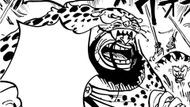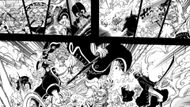One Piece is one of the largest anime and manga series produced, and as the viewers get to know it, many different characters are introduced, each affecting the vast world of the story. Each character, however big or small, is not without meaning, from the legendary pirates to the townsfolk. Meadows, a Dressrosa gladiator, is one of the lesser-known characters. Meadows is not included in the main story of One Piece, but it is a good demonstration of how his creator, Eiichiro Oda, manages to use minor characters to increase his story and add new depths to the epic story.
The question about who Meadows is answered quite simply. Meadows is a fighter who entered the Corrida Colosseum tournament in the Dressrosa arc to claim the Devil Fruit Mera Mera no Mi, which had belonged to Ace. In knight-like armor, Meadows portrayed himself as a proud warrior with a minor role in the bigger plot, in contrast with other gladiators, such as Cavendish or Bartolomeo. Nevertheless, his introduction emphasizes the ability of Oda to create fighters that fill the One Piece world with an atmosphere of chaos, rivalry, and ambition seen in Dressrosa.

Meadows unobtrusively contributes to the worldbuilding. The Colosseum had enough gaudy and overblown characters, but Meadows was the embodiment of the tried-and-true type of knight: silent, honorable, and trained. He was armored compared to the more outrageous gladiators to anchor the tournament with a traditional warrior-like character. Although he did not make it to the next battles, the fact that Meadows showed up stressed how many people were attracted by the tournament organized by Doflamingo and how strong and alluring Mera Mera no Mi truly was.

Even as a significantly minor character, the introduction of Meadows also shows how One Piece processes its immense cast. Many series leave minor characters in the background, but since One Piece has plenty, the more minor the character, the more memorable he/she is. Meadows, with his knightly essence and his stoic delivery, was able to shine amid exaggerated characters. This balance makes One Piece such an everlasting one. Each character, however minor his role is, seems like a real character in its universe.
Meadows’ significance in One Piece
Meadows does not have a significant effect on the main episodes of the Dressrosa arc, but his resulting appearance represents what makes One Piece special. Both the anime and the manga put forward a dedication to dramatization, making sure that characters such as Meadows do more than be mere background warriors. His presence portrays the magnitude of the Colosseum battles and gives credence to the notion that there are untold numbers of warriors paying tribute across the seas with a desire to be remembered.
The other interesting point about Meadows is his thematic use. The Dressrosa arc represents a fight between Luffy and Doflamingo but also the meeting of warriors and various intentions, whether seeking revenge or power. Meadows symbolizes the silent warriors, who do not need fame but fight because of the glory of this struggle. Unlike other gladiators, who were flamboyant, Meadows kept himself like a knight, thus indicating that even the characters that appeared rarely have their own personality and ideas in One Piece.

Design-wise, Meadows is also reflective of Oda's attention to detail. His armored appearance has a Western medieval-style feel, comparatively uncommon in One Piece when compared to pirate-inspired or samurai-inspired designs. This helps to give the series an international flavor, with worlds and characters being retold in its version of reality. Although Meadows does not have immense influence, his appearance and attitude contribute to the rub of another arc in Dressrosa, Colosseum, an arc famous for having immense and diverse fighters.
Besides, Meadows reflects the philosophy that even secondary characters can represent something bigger in One Piece. This ambition to be the possessor of the Mera Mera no Mi makes him indirectly linked with the legacy of one of the most influential characters of the series, Ace. He failed in his attempt but took his place in this list of people with whom he is witnessing the persistent ripple effect of the life and death of Ace across the seas.
Finally, Meadows serves as a reminder of how One Piece can be so respectful of its minor characters, to the point of granting them their personalities. Although he did not turn the plot dramatically, it enriched Dressrosa's mood and demonstrated how different fighters could be in the large world created by Oda. With such characters as Meadows, One Piece reaffirms its reputation as the manga that does not leave the smallest detail unnoticed and gives credit to fans who do not just follow the protagonists of the story but pay attention to the plethora of characters that occupy the world the manga takes place in.
